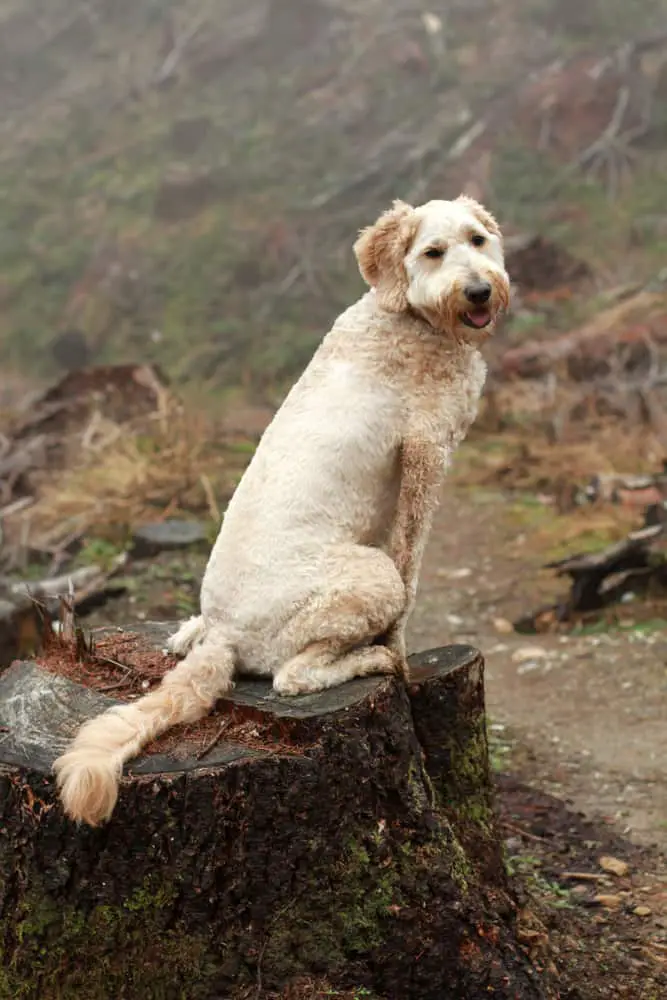Are Dogs Allowed In National Parks? Best/Worst Parks For Dogs
Pet parents treat their fur babies just like they would any other member of the family. When they plan adventures for themselves, they look for places to go that will accommodate them and their furry Friends. Visitations to the national parks offer so many opportunities to not just get out to get some exercise, but they afford their visitors the opportunity to explore nature, relive history and make tons of memories with their family members and friends.
If you want to plan an excursion to one of the amazing national parks in the United States, and you were wondering if your furry companion could tag along, the answer is mostly yes, however there are some stipulations you should know about.

What National Parks Are Not So Good For Dogs?
Although most national parks allow dogs to visit in some capacity, there are some that place a number of limitations on where fur babies are and aren’t allowed. The Great Smoky Mountains National Park which is located in the states of North Carolina and Tennessee, is one of America’s most popular parks, however there are only two places within the vast parameters of the park that dogs are allowed. Dogs are allowed in picnic areas, on roads, and at campgrounds.
Dogs are also very limited in terms of where they can and can’t go at the Rocky Mountain National Park in Colorado. If you and your furry companion wanted to get a bird’s eye view of the Rockies, you will not be able to do it on any of the trails or anywhere in the backcountry. Dogs are allowed on the campgrounds, at picnic areas and alongside established roadways.
Big Ben National Park in Texas is perhaps the one of the most prohibited when it comes to where dogs can go. This remote National Park is located in the state of Texas and borders Mexico. Dogs are not allowed on any trails, and the river is also off-limits. The only places dogs are allowed is where cars travel.
Yellowstone National Park in Idaho, Montana and Wyoming, is a favorite among most people who live in America, however it places heavy restrictions on where dogs can go within the park. Dogs are only allowed within a hundred feet of campgrounds, roads, and parking areas. Some reasons why there are so many restrictions on where animals can go while visiting Yellowstone National Park is the landscape. It can be unpredictable and safety is a major factor. People who visit the park have to contend with geysers, and they have to beware of the grizzly bears that live in the park.
Zion National Park in Utah, also places heavy restrictions on where dogs can go. There is one trail that dogs are allowed on, however they have to share it with bicycles. Zion National Park is another place where safety is a major factor in terms of where people and their fur babies can go. The park is known for being extremely hot during the summer months and so there is a risk that your dog may become overheated if you decide to visit the park. Also, there are a number of deep drop offs, slot canyons and narrow passes that are too dangerous for dogs and their humans to navigate.

What Are The Best National Parks to Visit With Your Dog?
Now that you have a clear idea of the national parks that are the least friendly to people with fur babies, here are some of the best national parks to visit with your dog. There’s nothing more exciting than taking a trip to the nation’s capital. There are so many things to see in the Washington DC area however, Kenilworth Park and Aquatic Gardens which is located in the heart of D.C. has a little something to offer everyone, and best of all, it is dog friendly. You can take your pet anywhere in the park as long as you keep them on a leash. You should be mindful that this park has ground-nesting birds, so you should make sure that your pet stays on their best behavior, and remains as non-vocal as possible to avoid scaring the wildlife in the park. If you plan to visit this park with your pet, you should also be mindful of the fact that the summer months are very hot, and the shade along the trails that are located around the ponds are limited.
Acadia National Park in Maine features three campgrounds, 100 miles of trails to hike and an ample amount of miles of carriage roads where dogs are more than welcome to roam as long as they are on a leash. There are a number of difficult trails in Acadia National Park, so people are advised to avoid taking their dogs along if they are planning to hike any of them. So trails people should avoid taking their pets on include: Giant Slide, Upper George Trail, Bubbles-Pemetic Trail, Flying Mountain and Norumbega Goat trail just to name a few. Trails that are closed to pets include:
- Perpendicular Trail
- Precipice
- Ladder Trail to Dorr Mountain
- Jordan Cliffs Trail
- Beech Cliffs Trail
- Beehive
Dogs are also along to accompany their humans as they sail to the Isle au Haut. If you decide to visit the island, you need to make sure that you and your fur baby visit during the day, as that is the only time pets are allowed. While visiting Acadia National Park you can help your dog earn a B.A.R.K. Ranger Tag. You and your dog can learn about why it is important to follow the B.A.R.K. rules while you visit the park, and once you and your fur baby have completed the checklist your dog will be officially sworn in by a park ranger, and you will be eligible to purchase a Bark Ranger tag to place on your dog’s collar to show off their achievement.
Congaree National Park in South Carolina, features the largest area of bottomland hardwood forest in the southeast region of the United States. The Redwoods of the East, which scale over 100 feet in height, are some of the tallest trees in the nation.Dogs are welcome to hike any trail in the park with their humans, they can take a stroll along the boardwalk, and they are welcome at the campgrounds. People should be prepared to come across high water, mud and downed trees if they plan to take trails that are not on the boardwalk, especially during the winter and spring seasons. It should be noted that this park has a leash maximum of six feet.
Crater Lake National Park in Oregon, makes several of its trails available to people and their furry companions during the fall and the summer months. These trails include:
- The Lady of the Woods Trail
- The Grayback Drive Trail
- The Godfrey Glen Trail
One trail is available to walk during the winter months. The Pacific Crest Trail is open during all the seasons to pets whether there is a covering of snow or not. If you plan to hike along this trail with your pet during the fall and winter seasons, you should be cognizant of the fact that you will have to share it with snowshoers and cross-country skiers. Rim Ridge parking lot is a fan favorite among visitors of the park and their fur babies. The area features fantastic views of the lake and a paved promenade that is a quarter of a mile in distance.
Unlike many of the other national parks, Crater Lake does allow people to leave their pets unattended inside their vehicles as long as weather conditions are favorable and conditions don’t pose any danger to the health and welfare of the animal. Crater Lake National Park is more liberal than most of the national parks, however there are still some restrictions, as pets are not allowed on unplowed roads, park trails that are not designated as dog friendly, inside of park buildings and in areas off of the walking trails. Visitors of the park should be mindful that Crater Lake does not have any kennels on site, and the closest kenneling facility is in Klamath Falls which is an hour away.
Yosemite National Park in California, features a number of bicycle paths, developed areas, sidewalks and paved roads that are all dog friendly. In addition, the park features Wawona Meadow Loop, which features a five-mile loop. It is a great place for people to enjoy some beautiful scenery and spend some quality time with their furry friends. One of the best things about the loop is that the bath is basically flat so there aren’t any major safety risks for pet parents to be concerned about.
A Few Things to Keep in Mind
No matter which national park you choose to visit with your fur baby, it is important that you respect and follow some basic rules. Make sure that you never leave your pet unattended. Pets should never be left tied to picnic tables, trees or anything else. You should make sure that your pet only uses the bathroom in designated areas. You should also make sure that you use disposable doggie bags to pick up waste and dispose of it properly.
Again, it is important that you make sure that your pet is well-behaved while visiting a national park, and you make sure they don’t interfere with wildlife species. To ensure the health and the safety of your dog, you need to make sure that you pack a water bowl, and several bottles of water for you and your pet to drink. Be sure to keep your dog on a leash at all times, and be mindful of the temperature of paved areas. If the pavement is too hot for you to walk on comfortably, it is too hot for your dog.
